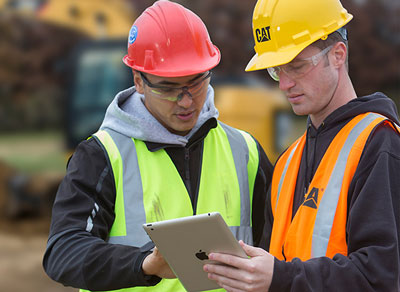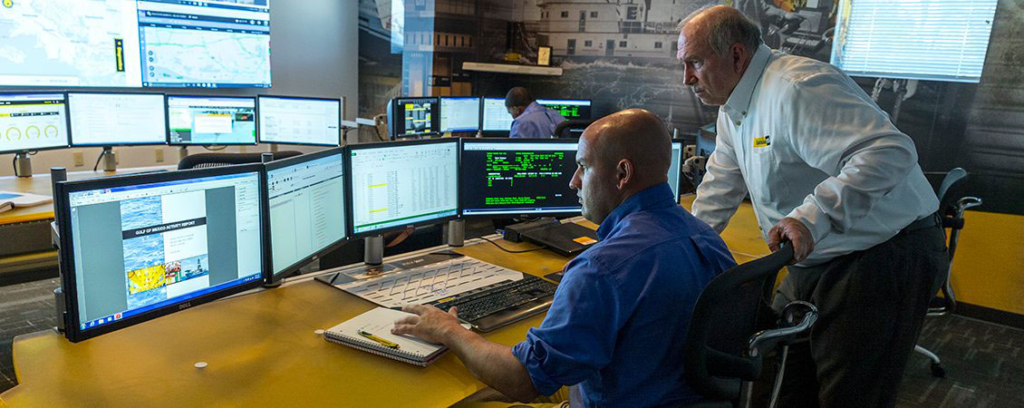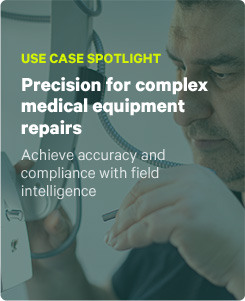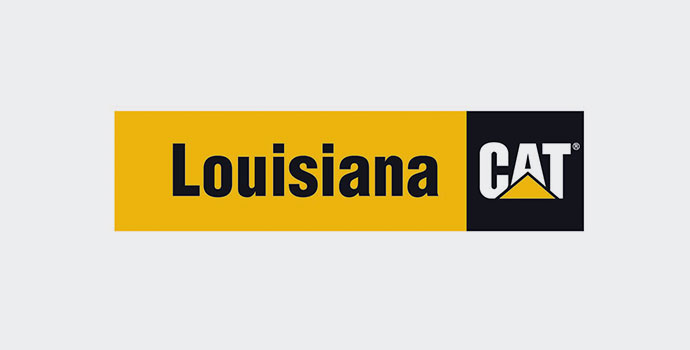Results
- Doubled JSA coverage to 95%
- Improved safety data quality and traceability
- Savings in paper and logistics costs by digitizing 250+ daily JSAs
- TRIR well ahead of US national average
About Louisiana CAT
Louisiana CAT has been proud to represent Caterpillar® for four continuous generations in the state of Louisiana. The company strives to be the leader in the markets they serve by offering superior value and an exceptional customer experience. Founded as a levee contractor in 1928 on the banks of the Mississippi River in Tallulah, Louisiana Tractor and Equipment Company became the first Caterpillar dealer in the state by 1933. The history of the company is one of continuity. From 1928 to the present day operations of Louisiana CAT, they have believed in focusing on the needs of customers and satisfying them completely. Today, the company has locations across Louisiana and the Gulf Coast and continues to focus on the needs of customers in the diverse equipment markets throughout Louisiana as well as the engine markets worldwide. With a highly skilled workforce, Louisiana CAT faces the challenge of meeting the needs of a booming industry.
For Louisiana CAT, safety is a company value, not a business priority. While priorities change, values are intrinsic to the organization. As the statewide dealer of CAT equipment, parts and service, the company has a diverse marketplace with demand for nearly every CAT product application – requiring its technicians to encounter occupational hazards daily.

Director of Health, Safety, and Environmental Craig Fisher understands the importance of the daily job safety analyses (JSA) in the planning and mitigation of risk to his field teams and has been a strong advocate since he started with the company.
Challenges
Louisiana CAT managed JSAs through a largely paper-based process. This meant that technicians would fill out a piece of paper on site and submit it to their supervisor for review. Shop leads would have to review and scan these documents individually to file in their HSE management platform. While a critical part of the job, JSAs were tedious for both technicians and supervisors. Technicians were becoming more adept at typing rather than writing, so many found them difficult to fill out. The growing volume – 250 JSAs on a typical day – was also a challenge to review, manage, and refer to should the need arise with limited supervisory staff. This resulted in completion rates that were less than ideal – roughly 50% at the shop and 5% in the field.
JSAs, along with safety observation cards, all had to be printed on paper and transported from site to shop in order to get entered into the system, creating significant material, logistics, and labor costs by the time the safety documents reached their final destination.
The company decided to digitize its critical JSA process and address the immediate gaps. While this helped in that specific area, eliminating their dependence on paper, and everything it entailed, it offered limited opportunities for scalability across other areas of the business. Louisiana CAT quickly outgrew the solution as the needs of the business evolved. Workflow automation and platform integration were no longer viewed as future projects in the pipeline, they were immediate needs for the organization.
Salesforce integration, in particular, was a key consideration for their next platform and hence became the reason the company chose TrueContext. The goal was to have visibility and the ability to review JSAs, both in the shops and field, in real time while streamlining and simplifying the process for the employees.
Solution
TrueContext worked with Craig and his team to develop a solution that will not only elevate the way they approached safety documentation and management but also open doors for data consolidation across this specific practice within the organization. With a tight timeframe of six weeks to set up and deploy the system, the team rolled out the app to Louisiana CAT’s close to 400 technicians, shop leads, and managers to handle up to 15 different safety documents.
“It wouldn’t have been possible without the high level of customer service that TrueContext delivered,” Craig explained. “I understand that it was an extremely complicated system that we were trying to build, with many different types of safety documentation. The implementation team met or exceeded all deadlines set, and they deserve all the praise for making it happen. What had previously taken four months utilizing our previous solution took TrueContext six weeks to build and deploy. They fully streamlined the design and rollout – and we did not hit any of the snags that we expected as we were planning it,” he added.
“The implementation team met or exceeded all deadlines set, and they deserve all the praise for making it happen. What had previously taken six months in our old solution took TrueContext six weeks to deploy.“
CRAIG FISHER
DIRECTOR OF HEALTH, SAFETY, AND ENVIRONMENT
Outcomes
JSA coverage is one of the biggest indicators that TrueContext delivered on its promise. The easy-to-use, streamlined documents, along with the form dispatch feature, dramatically increased completion rates to over 95% in the shop and around 70% in the field, a significant leap from the previous in-field figure of 5%.
It is not just the volume and speed at which JSAs are completed, but also the quality of the information recorded in those documents. With continued emphasis, oversight, and training, technicians are performing their job hazard assessments as required, prior to the jobs commencing, instead of filling out forms after the fact. This has led to more comprehensive job planning and an increased focus on safety.
High adoption, owing to the platform’s ease of use, has directly translated into more visible business impacts. More technicians are using TrueContext because they see the value it provides in streamlining their work. That, combined with the technicians’ participation in creating the solution, has led to higher engagement across all locations. “A culture shift is occurring and the technology is helping make it happen. I can also delegate platform management tasks to regional coordinators familiar with the system, such as onboarding new users and further streamlining workflows based on technician feedback,” Craig added. Here, the solution is helping turn his conceptual vision into a shared and practiced culture.
The procedures were put in place to elevate the overall safety of Louisiana CAT’s operations. Craig notes a comprehensive and consistent increase in safety, as evidenced by the Total Recordable Incident Rate (TRIR). Not only has the rate improved, but the severity of the incidents which have occurred has decreased. Currently, the customer’s OSHA TRIR is at 0.4, whereas the North American Heavy Equipment category average is 2.6. Among North American CAT dealers, the target is a TRI rate of 0.8 and the 2023 average was 1.1.

Future Outlook
While TrueContext is exclusively being used on the service and rental side, there are plans to scale it to other functions of the business, such as parts, machine inspections, and training – without incurring additional costs. New workflows are being explored, including incident investigation and near-miss reporting. Buy-in across the field force has additionally empowered users to request new functionality to cover more of their day-to-day processes within one app.
The outlook is singularly focused on plugging the system into Salesforce once the internal team has built and configured the platform for their needs. This integration would enable Louisiana CAT to truly expand their digital ecosystem for better analytics. Data integrity would get an even bigger improvement as information is pulled straight from Salesforce and validated on the spot. The workflows would be pre-populated containing work order and asset data, safety and compliance mandates, and other critical information to streamline work.
In terms of achieving a completely traceable safety trail, JSAs could be exported into Salesforce containing GPS data from field vehicles and tied to the work order as well as the technician. “This will really tighten the data that we have, streamlining data entry and drastically improving accuracy,” Craig explained. Another example would be in the event of workplace injury. Craig’s team can perform a deeper investigation by going through JSA records and getting a better sense of why the incident happened. They can pull the history and understand whether it’s an accident that could not have been prevented or an inevitable result of a pervasive safety issue in certain field teams.





